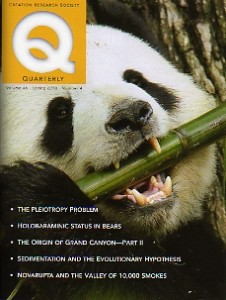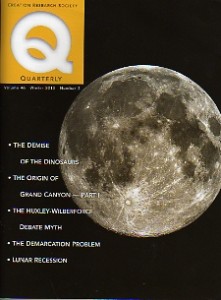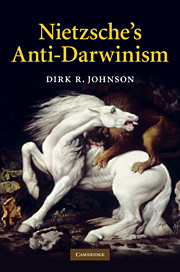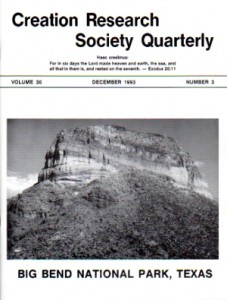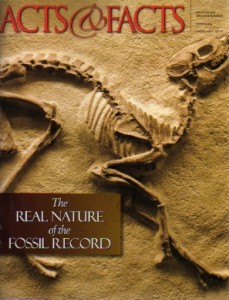Kudos to Ian Juby for the nice article and photo in the Canadian Newfoundland newspaper, Compass.
Also in the same issue of the newspaper was a letter from a reader critical of Ian’s lecture at a local church. Oddly enough (perhaps not!) is that the letter was much longer than is typical found in a newspaper. In fact, it took up 3 columns with no other letters printed that issue.
I suppose the editorial page editor couldn’t allow a rather favorable write-up of the talk and Juby’s ministry to go unchallenged!
More information about Ian and his activities can be found at his website, The Creation Ministries of Ian Juby.
cp
 Questioning evolution
Questioning evolution
by Andrew Robinson
The Compass (Canada), p. B3
November 9, 2010
In the world of academia, evolutionary biology is accepted as an important scientific field. From grade school in public institutions to graduate studies at the most prestigious universities and colleges in the world, the subject, which focuses on changes in inherited traits through different generations of species over time, is a widely studied topic.
Within pockets of the evangelical Christian community, however, there are concerns about evolution supporting the existence of Earth for millions and millions of years. At the Calvary Pentecostal Church in Carbonear on Tuesday, Oct. 26, one of those doubters was on hand to present an alternative view of the world’s past.
Ian Juby calls himself a creation science speaker who has been conducting research to support creationism for over 15 years. Creationism is the belief Earth and all that inhabits it is the creation of a supernatural being. Creation science aims to collect evidence supporting the Genesis narrative, which says the Earth was created in seven days.
read more…
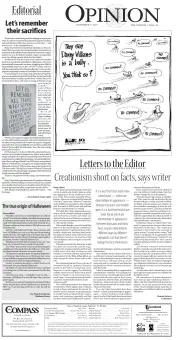 Creationism short on facts, says writer
Creationism short on facts, says writer
The Compass (Canada), p. 4
November 9, 2010
Dear editor,
The great debate featuring creationist versus evolutionist finally made a rather late appearance in our small town, courtesy of the Pentecostal Assembly of Carbonear. There was a rehash of the same old “evidence” that to the “ believers,” especially the children in attendance, left no doubt that the earth is 6,000 years-old and that humans and dinosaurs co-existed.
The slick but rather disjointed presentation which included computer graphics and animations, fossils and what was claimed to be casts of fossils were presented as conclusive proof that Darwin’s Theory of Evolution is false.
Who could dispute a cast of a fossil that showed a dinosaur footprint overlaid by a human footprint? I approach ideas with a healthy skepticism, realizing that breakthroughs in science often come from radical thinkers; however, my mantra is that “extraordinary claims require extraordinary proof.”
read more…
New centre to honour ‘father of geology’


